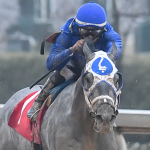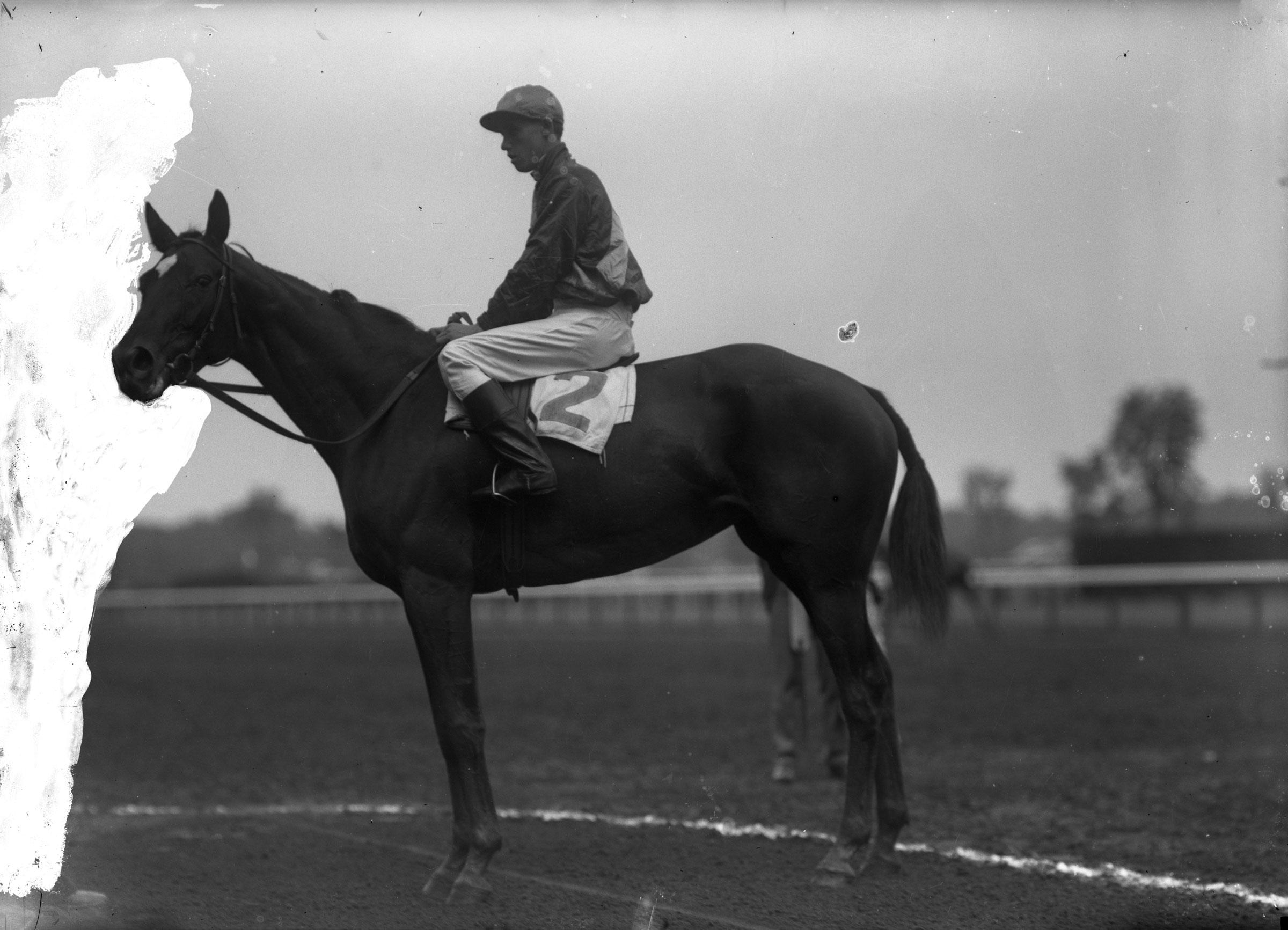
Preakness Quick Sheet: Get to Know the 2021 Preakness Horses

By the 1920s, horse racing was rebounding from the trying circumstances of the previous two decades, where the sport has contracted from more than 300 racetracks prior to 1900 to only 25 by the end of the 1910s. With World War I over and the Roaring Twenties in full swing, the decade saw some of its most iconic names: Man o’ War, Zev, Black Gold, and Exterminator. Alongside these greats came others whose time on the racetrack earned them places in the sport’s long memory as well as its Hall of Fame.
From a slow-starting colt who later sired a superstar to a princess who knew just how to beat the boys, the 1920s featured three horses who showed they had what it took to make a name for themselves in the crowded field of quality horses racing during this transitional era in the sport.
John and Fannie Hertz were lucky that Willis Sharpe Kilmer was an impatient man. Notoriously short of tolerance for both underachieving horses and trainers, Kilmer had high hopes for Sunreigh, the full-brother (same sire [father], same dam [mother]) of his champion Sun Briar, first as a racehorse – which did not pan out – and next as a stallion.

Sunreigh’s reign at stud was short; he sired only 14 foals before he died early in his stud career. From those 14 foals came a leggy chestnut out of the Count Schomberg mare Contessina, also a non-winner on the racetrack, a colt that he named Reigh Count.
At 2, Reigh Count needed seven starts to win his first race, a slow beginning which tested Kilmer’s patience. Unsatisfied with the colt’s performances among other concerns, he opted to disperse of his racing stable, which included both Sun Edwin, a stakes winner who sold for $75,000, and Reigh Count. Trainer Henry McDaniel tried to persuade his boss to keep the Sunreigh colt. Already on his second tenure with Kilmer, McDaniel had trained the great Exterminator as well as Sun Briar, so he was familiar with what good horses looked like. Kilmer was unmoved, however, and sold the colt to the Hertzes for $12,000.
In the Hertz colors, Reigh Count finished his 2-year-old season with wins in the Walden Handicap and the Kentucky Jockey Club Stakes and a second to his stablemate Anita Peabody in the Futurity Stakes at Belmont Park. While Reigh Count’s juvenile year was fair, his sophomore season was nothing short of spectacular. He won the Kentucky Derby, the Miller Stakes, the Lawrence Realization, the Saratoga Cup, and the Jockey Club Gold Cup, ending the year with a record of seven wins in eight starts.
For his 4-year-old season, the Hertzes came up with a new challenge for their Derby winner: racing in England. They shipped the colt across the Atlantic to capitalize on Reigh Count’s talent as a stayer and targeted the 2½-mile Ascot Gold Cup. But his stay in England did not start well: he lost his first three starts before finally finding his form in the Coronation Cup on the Epsom Derby undercard. Off of that nose victory, Reigh Count entered the Ascot Gold Cup as co-favorite alongside Invershin, who was looking to follow up his 1928 victory with a second one in the Ascot classic. The American horse ran well, but was no match for Invershin, finishing four lengths back in second.
With his English adventure done, the Hertzes retired Reigh Count to stud, standing him first at their Leona Heights Stock Farm in Illinois. He then moved to Claiborne Farm in Kentucky before taking up residence at the Hertzes’ new Stoner Creek Stud. In his nearly two-decade long stud career, Reigh Count produced 290 foals, including Count Arthur and 1945 Travers winner Adonis. Most notably, he sired Count Fleet, 1943 Triple Crown winner and sire of horses like 1951 Kentucky Derby winner Count Turf and Belmont Stakes victors Counterpoint and One Count.
Named for golfer Gene Sarazen, this son of High Time had everything going against him from the start. His sire won only once in seven races and often bled after racing, which made him a less attractive choice as a stallion; his dam, Rush Box, once sold for $50 but produced a couple of stakes winners despite her inauspicious pedigree. Breeder Dr. Marius E. Johnson sold Sarazen in a package deal with another yearling to Colonel Phil Chinn for $2,500.

Chinn found his new racehorse so challenging that he had him gelded, but Sarazen remained difficult especially in the latter part of his career, often sulking before races to the point that he needed to be blindfolded to be persuaded to go out to the racetrack. Yet, despite his questionable pedigree and tough personality, Sarazen came out blazing. He went undefeated at age 2, winning the Champagne Stakes at Belmont and the National and Laurel Special Stakes at Laurel Park. He ended the year with a win in Fall Serial #2 against older horses, a rare feat for a 2-year-old. His standout races as a juvenile prompted Mrs. William K. Vanderbilt III to purchase him from Chinn for $35,000.
At 3, Sarazen continued his winning ways in races like the Carter, Saranac, Huron, Manhattan, Arverne, and Maryland Handicaps. He also won the International Special #3 over Épinard, adding the French champion to the list of horses he defeated that year, a list that included 1923 Kentucky Derby and Belmont Stakes winner Zev, Kentucky Oaks champion Princess Doreen, and Mad Play, winner of that year’s Belmont.
His next two seasons were more of the same; he won the Dixie Handicap at Pimlico twice and the Arverne Handicap for the second time and added the Metropolitan Handicap to his resume. However, his incorrigible personality intensified, and he took to sulking through his later starts. Sarazen never won another race in 16 starts after the 1926 Mount Vernon Handicap. Mrs. Vanderbilt retired him after the 1928 season and sent him to Thomas Piatt’s Brookdale Farm in Kentucky, where Sarazen lived until his death in 1940.
Lady Sterling was not a good racehorse. In her fifty-four starts, this daughter of Hanover won only nine, mostly in claiming races and mostly at sprint distances. However, as a broodmare, she gave the Thoroughbred breed three champions: Sir Martin, who went from America to England to try the Epsom Derby (he fell during the race) and later won the Coronation Cup; Sir Barton, America’s first Triple Crown winner and Hall of Famer; and Lady Doreen, full sister to Sir Martin. From Lady Doreen came a Kentucky Oaks winner and Hall of Famer named Princess Doreen.

Bred by John E. Madden at his Hamburg Place, Princess Doreen raced in the colors of Audley Farm and brothers B.B. and Monfort Jones. The brothers were relatively new to racing and purchased much of their early racing stock from Madden; this included Princess Doreen, who became the best of the Audley runners in her 3-year-old season. After a record of five wins, two seconds, and one third from 13 starts at age 2, Princess Doreen came out swinging in 1924, winning the Kentucky Oaks (via disqualification) over horses like Nellie Morse, winner of that year’s Preakness, and the Coaching Club American Oaks among her eight wins that year.
At 4, she found success against males in races like the Bowie, Covington, and Autumn Handicaps, often carrying as much as 130 pounds. The following year, she beat a field of seven others in the Saratoga Handicap, including Sarazen, and won the Inaugural Handicap at Latonia. Her final season was 1927, when she won four of 12 starts to finish out her career with a record of 34 wins, 15 seconds, and 17 thirds in 94 races. She retired as the leading money-winning filly or mare of her era, with $174,745 in total purses.
Princess Doreen retired to Audley Farm to produce eight foals, four of whom were winners on the racetrack. Of those four, her best was Miss Doreen, winner of the 1948 Santa Margarita Handicap at Santa Anita. B.B. Jones dispersed the Audley horses in 1939, but kept a promise to his late brother Montfort, keeping Princess Doreen and allowing their champion tracemare to live out her life at the historic Berryville, Va. farm.